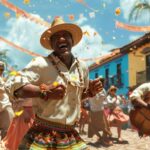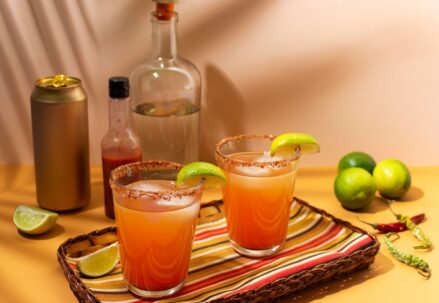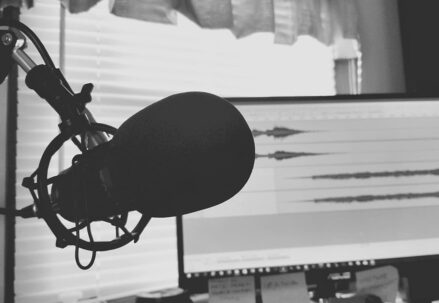In Colombia, the heartbeat of its culture pulsates through music and dance, bringing people together in celebration, whether it’s amidst the vibrant festivities of a city party or the traditional charm of a local festival. Here are seven traditional Colombian dances that are a must-see for anyone visiting the country.
1. Cumbia
Cumbia stands out as a musical genre that spans across Latin America, with its Colombian variant originating from the blend of cultures among the indigenous people, African descendants, and Spanish colonizers along the northern coast. This dance symbolizes a courtship ritual, with men pursuing women who respond with graceful, hip-swaying movements to the rhythm of drums and flutes. The attire for Cumbia is distinctive, with women donning off-the-shoulder blouses and wide skirts, and men wearing white, complemented by the traditional sombrero vueltiao.
2. Bullerengue
Rooted in the Afro-descendant communities of Colombia’s Caribbean region, Bullerengue draws inspiration from West African rites celebrating a girl’s passage into womanhood and maternity. Historically, this dance was exclusive to women, as societal norms barred them from musical engagement in the presence of men. Evolving into a communal festivity, men now partake in the dance, which is characterized by drum beats and the guiding voice of a woman. Traditional attire is colorful, though some prefer classical white outfits.
3. Joropo
Joropo is emblematic of Colombia’s eastern plains, echoing a man’s dominion over his surroundings. The dance features a distinctive stomping move, known as zapateo, believed to be influenced by Spanish flamenco. Participants wear vibrant costumes and traditional shoes, with men in long-sleeved shirts and pants, and women in snug tops and flouncy skirts.
4. Bambuco
The Andean regions of Colombia cherish Bambuco, a dance that fuses Spanish and indigenous elements, resembling a delicate waltz where couples engage in brief, gentle contact. Men’s outfits include hats, white shirts, dark pants, and a red bandana, while women’s attire consists of blouses and long, often brightly decorated skirts.
5. Torbellino
Also originating from the Andean region, the dance known as Torbellino captivates with its portrayal of flirtation and playful courtship. Couples engage in a dynamic, spirited performance, where nimble footwork and poetic dialogue intertwine, echoing the rituals of courtship with charm and vivacity. The dancers’ attire reflects the rustic elegance of traditional peasant dress. Men are adorned in white shirts and dark pants, draped with ruanas, a type of poncho that signifies the Andean way of life. Women, on the other hand, don elegant lace-adorned shirts paired with dark, flowing skirts. Their ensemble is further accentuated by hats and shawls, adding layers of cultural richness and aesthetic appeal to the performance. This dance not only showcases the intricate steps and rhythms unique to the region but also serves as a vibrant expression of Andean social customs and the enduring beauty of Colombia’s cultural heritage. Through Torbellino, dancers and observers alike are transported into a world where tradition and artistry blend seamlessly, offering a glimpse into the heart and soul of the Andean community.
6. Mapalé
Mapalé returns to the Caribbean coast’s Afro-descendant roots, characterized by vigorous dancing to percussion. The movements are interpreted variably as sexual or as a mimicry of slaves’ defiance against their oppressors. Men dance in pants, while women wear colorful, short tops and skirts.
7. Modern Colombian Dances
The evolution of Colombian dance continues with modern interpretations that blend historical influences with contemporary styles. Champeta, from the Caribbean Coast, merges West African beats with modern instrumentation, leading to solo and couple dances that emphasize lively footwork and hip movement. Salsa choke, an urban mix of African, salsa, and reggaeton rhythms, gained fame during the 2014 FIFA World Cup, showcasing the Colombian soccer team’s celebratory dances.
Through these dances, Colombia tells a story of cultural synthesis, resilience, and celebration, inviting visitors to delve into its rich heritage and vibrant contemporary scene.
Table of Traditional and Modern Colombian Dances
| Dance | Region/Origin | Characteristics | Attire |
|---|---|---|---|
| Cumbia | Northern Coast | Courtship ritual with drums and flutes | Women: White and red blouses, wide skirts. Men: White shirts, pants, sombrero vueltiao. |
| Bullerengue | Caribbean Afro-descendants | Celebrates womanhood and maternity, drum-led | Colorful or all-white; women in tops and skirts, men in shirts and pants. |
| Joropo | Eastern Plains | Stomping, represents bravery | Colorful traditional clothing; men in shirts and pants, women in tight tops and puffy skirts. |
| Bambuco | Andean regions | Waltz-like, Spanish and indigenous mix | Men: Hat, white shirt, dark pants, red bandana. Women: Blouses, long skirts. |
| Torbellino | Andean regions | Courtship ritual with quick steps and verse | Peasant style; men in shirts, pants, and ruanas. Women in lace-adorned shirts and skirts. |
| Mapalé | Caribbean coast | Vigorous, possibly represents slave defiance | Colorful; men in pants, women in short tops and skirts. |
| Modern (e.g., Champeta, Salsa choke) | Various | Mix of traditional and modern influences | Varied, often colorful and adapted for lively movement. |
This table encapsulates the essence of Colombian dance, highlighting the diversity and cultural significance of each form. Through engaging with these dances, whether as an observer or participant, individuals can connect with the vibrant soul of Colombia and experience the joyous celebration that is central to its way of life.
To Wrap Up
In conclusion, the rich tapestry of Colombian culture is vividly expressed through its diverse range of traditional and modern dances. Each dance offers a window into the country’s historical narratives, societal norms, and the seamless blend of indigenous, African, and Spanish influences that have shaped Colombia’s identity over centuries. From the courtship rituals depicted in Cumbia and Torbellino to the celebratory expressions of Bullerengue and the modern vibrancy of Champeta and Salsa choke, these dances are a testament to the enduring spirit and creativity of the Colombian people. Visitors are thus encouraged to immerse themselves in these cultural expressions to gain a deeper appreciation of Colombia’s heritage and contemporary dynamism.





